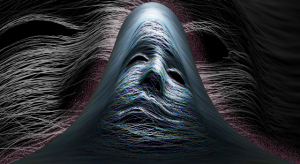Content by Donald J. Wheeler

Wed, 03/06/2024 - 12:03
Over the past two months we’ve considered the properties of lognormal and gamma probability models. Both of these families contain the normal distribution as a limit. To complete our survey of widely used probability models, this column will look at…
Wed, 02/07/2024 - 12:03
Clear thinking and simplicity of analysis require concise, clear, and correct notions about probability models and how to use them. Here, we’ll examine the basic properties of the family of gamma and chi-square distributions that play major roles in…
Mon, 01/08/2024 - 12:03
When do we need to fit a lognormal distribution to our skewed histograms? This article considers the basic properties of the lognormal family of distributions and reveals some interesting and time-saving characteristics that are useful when…
Mon, 12/04/2023 - 12:03
Fourteen years ago, I published “Do You Have Leptokurtophobia?” Based on the reaction to that column, the message was needed. In this column, I would like to explain the symptoms of leptokurtophobia and the cure for this pandemic affliction.…
Mon, 10/30/2023 - 12:03
In last month’s column, we looked at how process-hyphen-control algorithms work with a process that is subject to occasional upsets. This column will consider how they work with a well-behaved process.
Last month we saw that process adjustments can…
Mon, 10/02/2023 - 12:03
Many articles and some textbooks describe process behavior charts as a manual technique for keeping a process on target. For example, in Norway the words used for SPC (statistical process control) translate as “statistical process steering.” Here,…
Tue, 09/05/2023 - 12:03
As we learned last month, the precision to tolerance ratio is a trigonometric function multiplied by a scalar constant. This means that it should never be interpreted as a proportion or percentage. Yet the simple P/T ratio is being used, and…
Mon, 08/07/2023 - 12:04
A simple approach for quantifying measurement error that has been around for over 200 years has recently been packaged as a “Type 1 repeatability study.” This column considers various questions surrounding this technique.
A Type 1 repeatability…
Mon, 07/10/2023 - 12:03
Chunky data can distort your computations and result in an erroneous interpretation of your data. This column explains the signs of chunky data, outlines the nature of the problem that causes it, and suggests what to do when it occurs.
When the…
Mon, 06/05/2023 - 12:03
The keys to effective process behavior charts are rational sampling and rational subgrouping. As implied by the word rational, we must use our knowledge of the context to collect and organize data in a way that answers the interesting questions.…